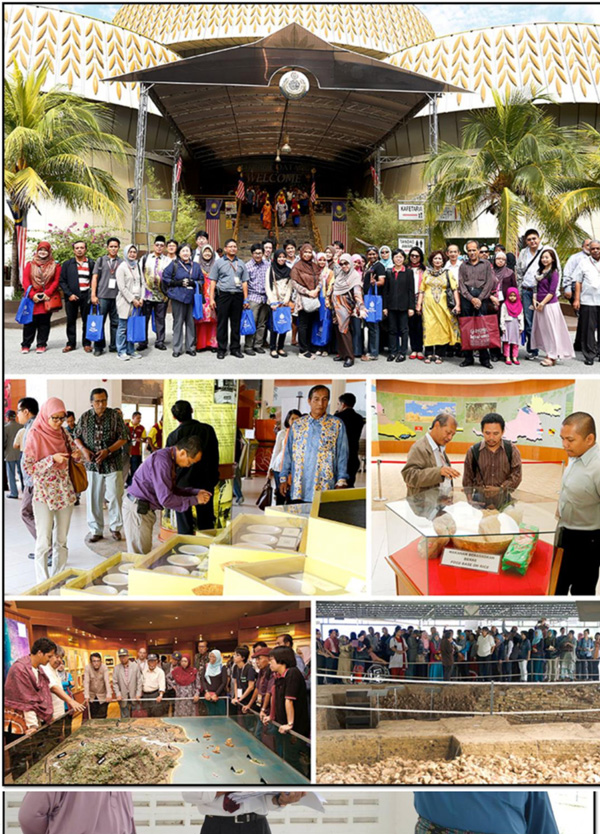PARTICIPANTS OF IAHA 2014 VISIT HISTORICAL TREASURES IN KEDAH
UUM ONLINE: 22 February 2014-The state of Kedah or also known as the “Rice Bowl of Malaysia”, for the first time, since its inception in 1960, was given the honour to host the 23rd International Conference of Historians of Asia 2014 (IAHA 2014). It was collaboratively organised by Universiti Utara Malaysia (UUM) and Malaysian Historical Society (PSM).
The second day of the conference saw participants visited the wold renowned historical and archaeological sites around Kedah. Their first stop was Kedah Paddy Museum, located at the foot of Gunung Keriang. A mural which displayed the various stages of rice cultivation from ploughing, planting, threshing and winnowing attracted the attention of the participants.

The journey continued to Bujang Valley Archaeological Museum at Merbok. The Bujang Valley had a thriving Hindu and Buddhist civilisation. It was a vibrant trading centre in South East Asia and became an important and prosperous kingdom attracting traders from China, India and the Middle East.
Besides, the participants visited the archaeological sites in Sungai Batu, Merbok. Archaeologists discovered the sites as iron smelting industry site, a port with ten jetties, a ritual site for worship at GunungJerai and thirteen administration buildings.
UniversitiSains Malaysia (USM) Global Archaeological Research Centre (PPAG) gained global recognition following the mapping of Sungai Batu civilisation sites in year 2007. The sites were mapped out for the excavation of artefacts in year 2009 and they were probably the oldest civilisation in Southeast Asia.
The director of PPAG USM, Prof Datuk Dr Mokhtar Saidin who was at the site during the visit, said efforts to trace historical remains would obviously take time as research works had to be carried out meticulously.
Also joined the visit were Dato' Wira Dr.Affifudin Haji Omar, Director of IAHA 2014, Assoc Prof Dr Rohani Hj Ab Ghani and committee members of IAHA 2014.
